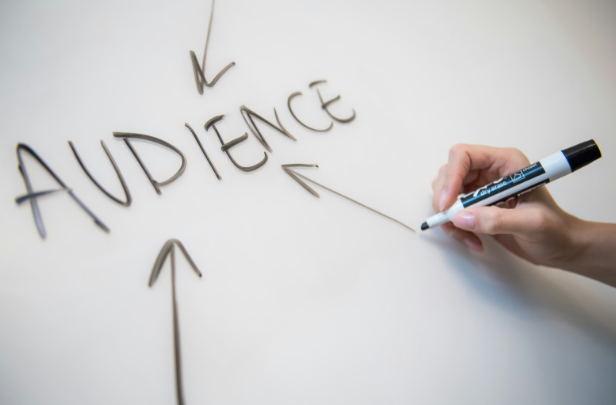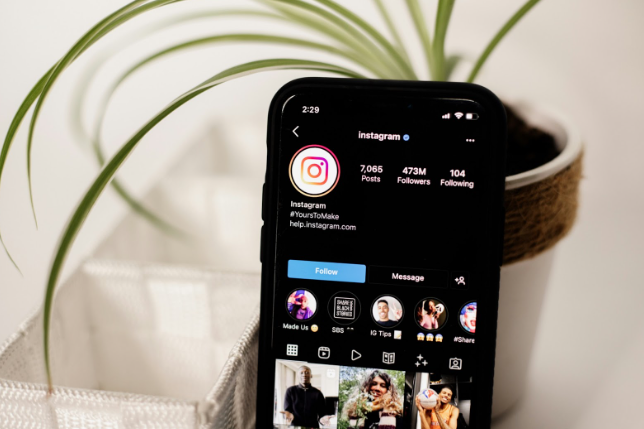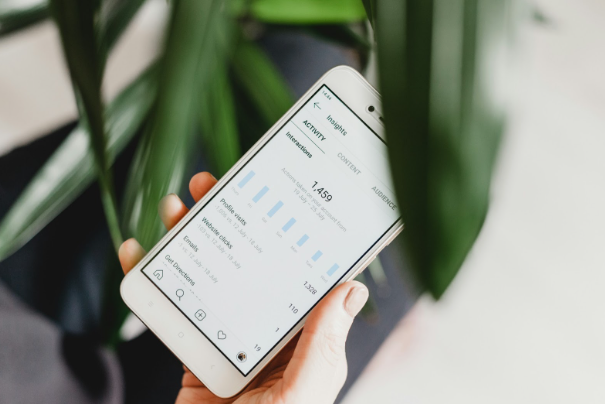Table of Contents
Influencer marketing – love it or hate it, it’s hard to ignore. If it’s not already part of your social media marketing strategy, it should be. While marketing in itself is a bit of an art, there’s also an element of science to it, and influencer marketing is no different.
All too often, brands make the mistake of picking a few key influencers based on popularity and relevance, sending them products, and waiting for the magic to happen. But that’s not enough. Without a solid plan backed by data, you might not see much return on your investment.
While influencer content undoubtedly provides valuable reach, without a strategic, data-driven approach, you could see the results quickly fizzle out or not materialize at all.
Building a Data-Driven Influencer Marketing Campaign
If you want an influencer campaign that delivers real results for your brand, you’ve got to treat it like any other campaign. It takes more than just relying on an influencer’s popularity – you need to set clear goals and use metrics to measure success.
Data Analysis and Audience Segmentation
At the heart of any data-driven influencer marketing campaign is your audience. You could blow your entire budget on someone who boasts millions of followers and sky-high engagement, but if they’re not posting the sort of content that your audience is interested in, it won’t have the effect you were hoping for.
Before you even begin looking for influencers to partner with, you need a thorough understanding of who your audience is. In sectors like ecommerce for manufacturers, understanding the right audience is crucial to connect with influencers who can highlight your products effectively to buyers. And, you guessed it, that means analyzing the data.
Chances are you already have access to this data through tools like Google Analytics, social media insights, and customer relationship management (CRM) software. Gather as much data as you can get your hands on. Then, segment your audience based on things like demographics, psychographics, and purchase behaviors.
Source: Unsplash
For example, imagine a business selling domain names wants to boost its sales. If they partner with an influencer who has a massive following but whose audience isn’t likely to purchase domain names, chances are their investment won’t yield great results.
Instead, they narrow down their audience to small business owners, bloggers, and entrepreneurs looking to launch a website. Then, they find influencers who are popular with these groups, like those who post content related to website development and online business. Even though these influencers may not have huge followings, their followers are more likely to be interested in buying domain names.
By doing this bit of groundwork, you can ensure that your influencer partnerships and content align well with specific segments of your audience, increasing the chances of success.
Setting Goals and Metrics for Influencer Campaigns
First, define specific goals for your data-driven influencer marketing campaign. What exactly are you hoping to achieve? While the ultimate goal might be to ‘sell more products,’ it’s essential to understand how an influencer campaign can contribute to this.
It could be that you’re just looking to increase brand awareness by extending your reach. Or, you might be looking for a more direct impact like an increase in website traffic or driving product sales through post clicks.
Ensure your campaign goals are consistent with your broader marketing objectives, and then establish key performance indicators (KPIs) to measure its success. These could involve metrics such as engagement rate, click-through rate (CTR), conversion rate, or return on investment (ROI).
Source: Pexels
For example, let’s say a company wants to promote its data science platform. Their main campaign goal is to increase user engagement and adoption of the platform, which fits perfectly with their larger marketing aim of growing the platform’s user base and market share.
To achieve this, they partner with reputable influencers who have expertise in data science or machine learning. Together, they create educational content or tutorials explaining complex concepts, such as Random Forest vs Gradient Boosting. This not only educates their audience but also brings more people to their website, increasing engagement and interest in the platform.
In this example, the data-driven influencer marketing campaign’s key performance indicators (KPIs) would include metrics like engagement with influencer content, the number of clicks to their website, and the conversion rate of users who start using the platform.
Identifying the Right Influencers Through Data Analysis
Picking the right influencers can really make or break your campaign. Don’t just look at follower count, but consider other insights as well. How engaged is the influencer’s audience with their content? For example, you might find that working with someone who has a smaller but super engaged audience could actually give you better results.
You’ll also want to consider whether the influencer’s audience aligns well with your target market. For instance, if you’re targeting millennial professionals with AI solutions for small business, you probably don’t want an influencer who is predominantly followed by trend and product-focused Gen Z.
Thankfully, you don’t need to do all this research yourself. The influencer market is booming, and there are now plenty of platforms available that provide detailed analytics on influencers’ audience demographics, engagement rates, and even the authenticity of their followers. So, it should be relatively easy to do your homework before you start to approach influencers to partner with.
Source: Unsplash
Data-Driven Approaches to Content Strategies
While good influencers are generally pros at creating tailored content for their followers, you want to make sure that the content you are paying for resonates with your audience and reflects your brand values. Don’t risk wasting your budget on content that isn’t right by being too vague with your briefs or content strategy. The last thing you want is for your brand to be associated with content that offends your audience or devalues your brand.
Use all the data and analysis you’ve gathered on your audience to provide detailed briefs on the sort of content you are looking for. Include specifics on your target audience, campaign objectives, key messaging, and a good overview of your brand identity and tone of voice. Additionally, provide specific content guidelines to steer the influencers in the right direction.
Think about the types of content that work best for connecting with your audience and getting your message across effectively. Your data should help you understand what kind of content they like to engage with the most.
For example, if you’re targeting IT professionals with information about Apache Hive, you might use blog posts, videos, tutorials on topics like ‘what is Apache Hive?’, or live streams where influencers demonstrate how to use Hive. On the other hand, if you’re promoting a new makeup brand, platforms like Instagram and TikTok would be more suitable for sharing high-impact images and makeup tutorials.
Authenticity is key in influencer marketing. We’ve all seen those unconvincing ads where influencers endorse products that don’t fit their lifestyle or content. So, whatever platform and content style you go with, you’ll want to find a balance between integrating your brand message and maintaining the authenticity of the influencer’s voice.
Source: Unsplash
Leveraging Data for Performance Optimization
Running a data-driven influencer marketing campaign isn’t a ‘set in and forget it’ sort of task. Throughout the campaign, you should be continuously monitoring and analyzing the performance metrics you’ve set to make sure your content is having the desired effect. If you’re not seeing the right results, you might want to make some changes.
To see how well your content is performing, regularly track engagement metrics such as likes, comments, shares, and impressions. If your end goal is to drive actions like website visits, sign-ups, or product purchases, you’ll also want to analyze conversion metrics to measure the campaign’s impact.
You can’t expect to get everything right the first time, so don’t be afraid of experimenting and making changes. For example, let’s say you’re running an influencer campaign to promote your latest product line. While you get off to a good start, you notice as the campaign goes on that engagement with your influencer content is dropping off, and you’re seeing fewer click-throughs to your website.
To understand what’s not working, you conduct A/B testing. You try out different content formats, messaging, and influencer partnerships to see what resonates best with your audience. For instance, you might find that using infographics instead of text-heavy posts gets better engagement, or collaborating with influencers who have a stronger presence in the tech community improves your reach.
Source: Unsplash
Measuring ROI and Iterating for Future Success
As well as monitoring your ongoing key performance metrics you’ll also want to evaluate the overall ROI of your data-driven influencer marketing campaign. If your goal is to raise overall brand awareness, figuring out an exact ROI can be tricker. However, you can still measure indicators like website traffic or use social listening tools to gauge the effectiveness of your campaign.
If your objectives were to increase website traffic or drive sales, you can calculate the overall ROI by comparing the cost of investment against the achieved results, such as click-through rates or purchase conversions. Use metrics such as cost per acquisition (CPA) and return on investment (ROI) to determine the overall success of your campaign.
Optimizing Influencer Campaigns with Data-Driven Insights
Using influencers can be a great way to connect with your target audience, but beyond the likes, clicks, and shares, it can sometimes be difficult to measure just how effective your campaign has been. By using data to plan, execute, and improve your campaigns, you can make sure you deliver optimal results and get the most out of your investment.
At every step, from picking the right influencers to content creation and performance analysis, each stage of your campaign should be informed and shaped by actionable insights derived from data analysis.
By continuously refining strategies based on performance metrics and consumer feedback, you can take the guesswork out of your campaigns and be confident in their success.




























